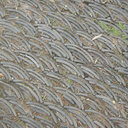Pharmacokinetic-pharmacodynamic modeling to study the anti-dysmenorrhea effect of Guizhi Fuling capsule on primary dysmenorrhea rats.
Keywords
Abstract
BACKGROUND
Primary dysmenorrhea (PDM) is one of the most common gynaecological disorders among women, which seriously affects women's life quality due to its high incidence rate. Guizhi Fuling capsule (GZFLC), a well-known traditional Chinese medical prescription, has been widely used to treat gynecological blood stasis syndromes such as PDM. However, its mechanisms of action and combination were still unknown.
OBJECTIVE
The aim of this study was to develop a pharmacokinetic-pharmacodynamic (PK-PD) model to assess time-concentration-effect relationships for anti-dysmenorrhea effect of GZFLC and provide better understanding for mechanisms of action and combination of GZFLC.
METHODS
The PDM rats model was induced by oxytocin exposure following estradiol benzoate pretreatment. Gallic acid (GA), amygdalin (AMY), albiflorin (ALB), prunasin (PA) and cinnamic acid (CA) were evaluated as bioactive ingredients for investigating PK processes. GA, AMY, ALB and PA exhibited appropriate PK parameters and were selected as the PK markers to map the anti-dysmenorrhea effect of GZFLC. A PK-PD model was established on the basis of GA, AMY, ALB and PA plasma concentrations vs. the values of two ratios (PGE2/PGF2α and 6-Keto-PGF1α/TXB2), by a two-compartment PK model with a simple Emax model to explain the time delay between the drug plasma concentrations of PK markers and the anti-dysmenorrhea effect.
RESULTS
The PDM rat model has been successfully established. Compared with the normal treated group, the bioactive ingredients in PDM treated group exhibited significant changing trends of PK behaviors, such as better absorption and distribution, slower elimination and delays in reaching the maximum concentration (Tmax). The analysis of PK-PD parameters indicated that the active metabolites and prototypes of bioactive ingredients in GZFLC were inclined to regulate the activity of prostacyclin synthetase and thromboxane synthetase to control the production of TXA2 and PGI2 so as to treat PDM. As the main effective medicinal materials for the treatment of PDM in GZFLC prescription Persicae Semen, Moutan Cortex and Paeonia lactiflora Pall, Persicae Semen played the most important role, while the role of Paeonia lactiflora Pall was the weakest.
CONCLUSIONS
The PK-PD model results provided scientific basis for clarifying compatibility mechanisms of GZFLC prescription and a better understanding for biosynthetic mechanisms of four prostaglandins (PGE2, PGF2α, 6-Keto-PGF1α and TXB2) in the treatment of PDM by GZFLC. Investigations on the relationship between the effects and the bioactive ingredients are of benefit to explore the mechanisms of action and combination for traditional Chinese medical prescriptions (TCP) and facilitate the development of future clinical applications of TCP.



